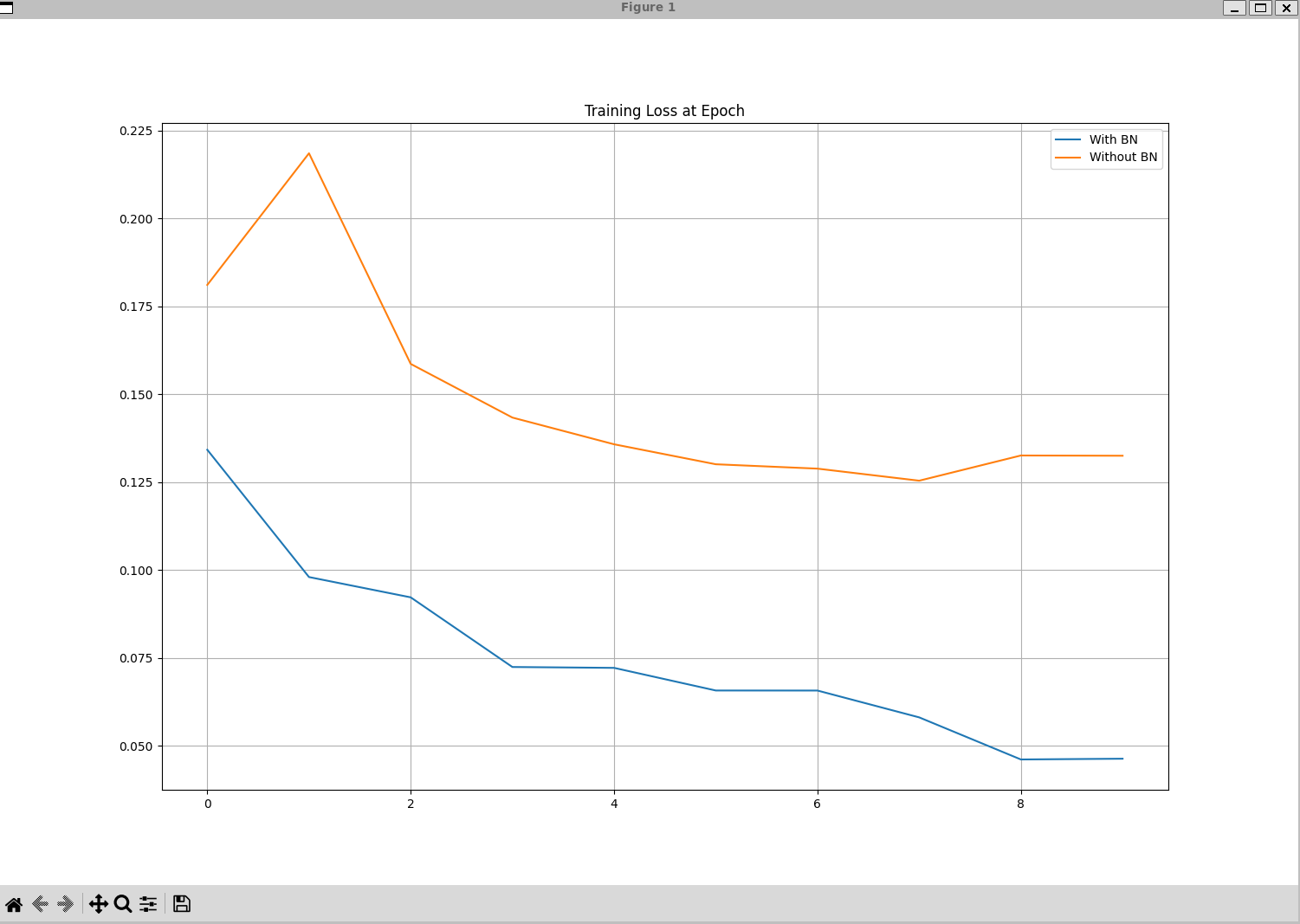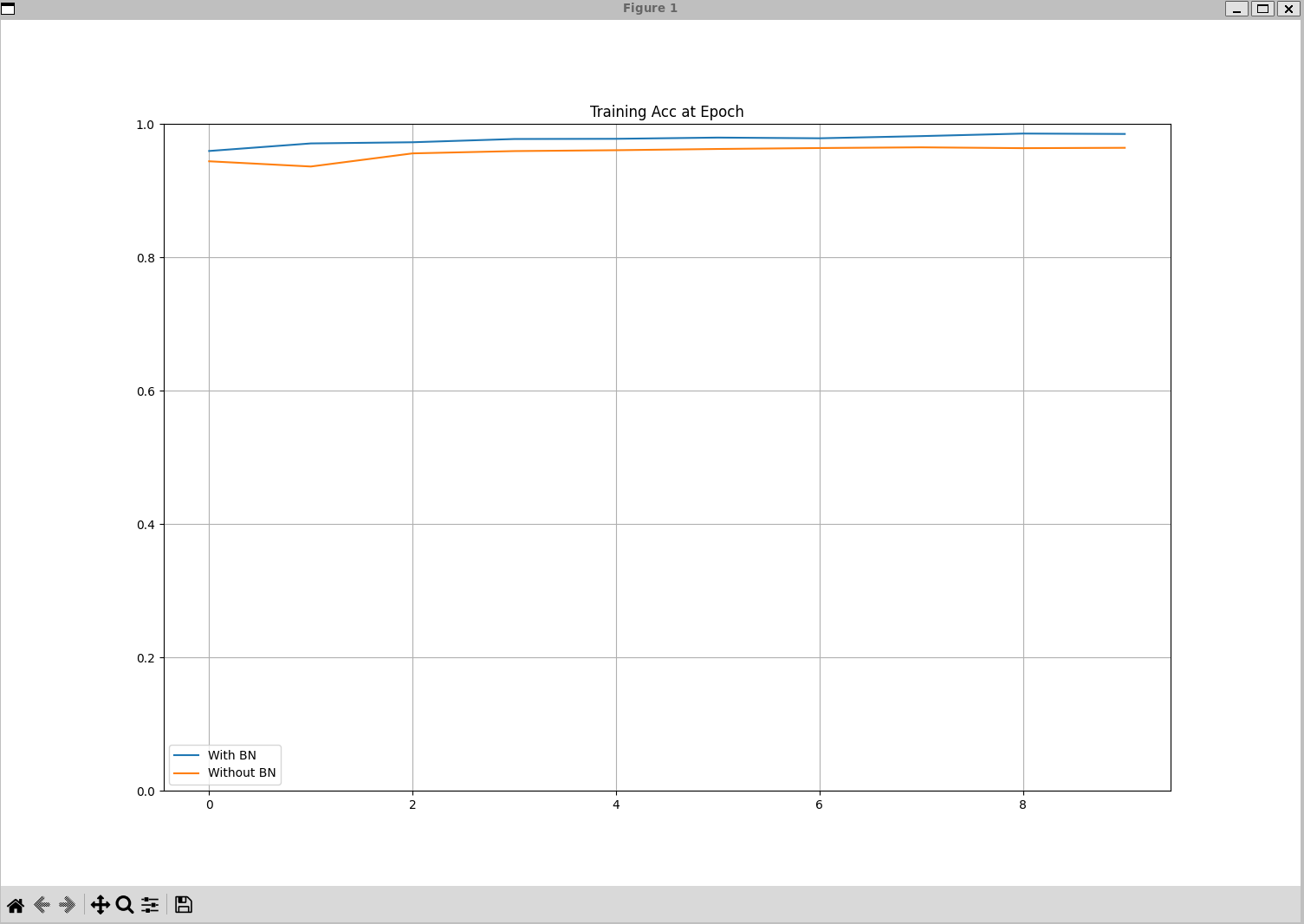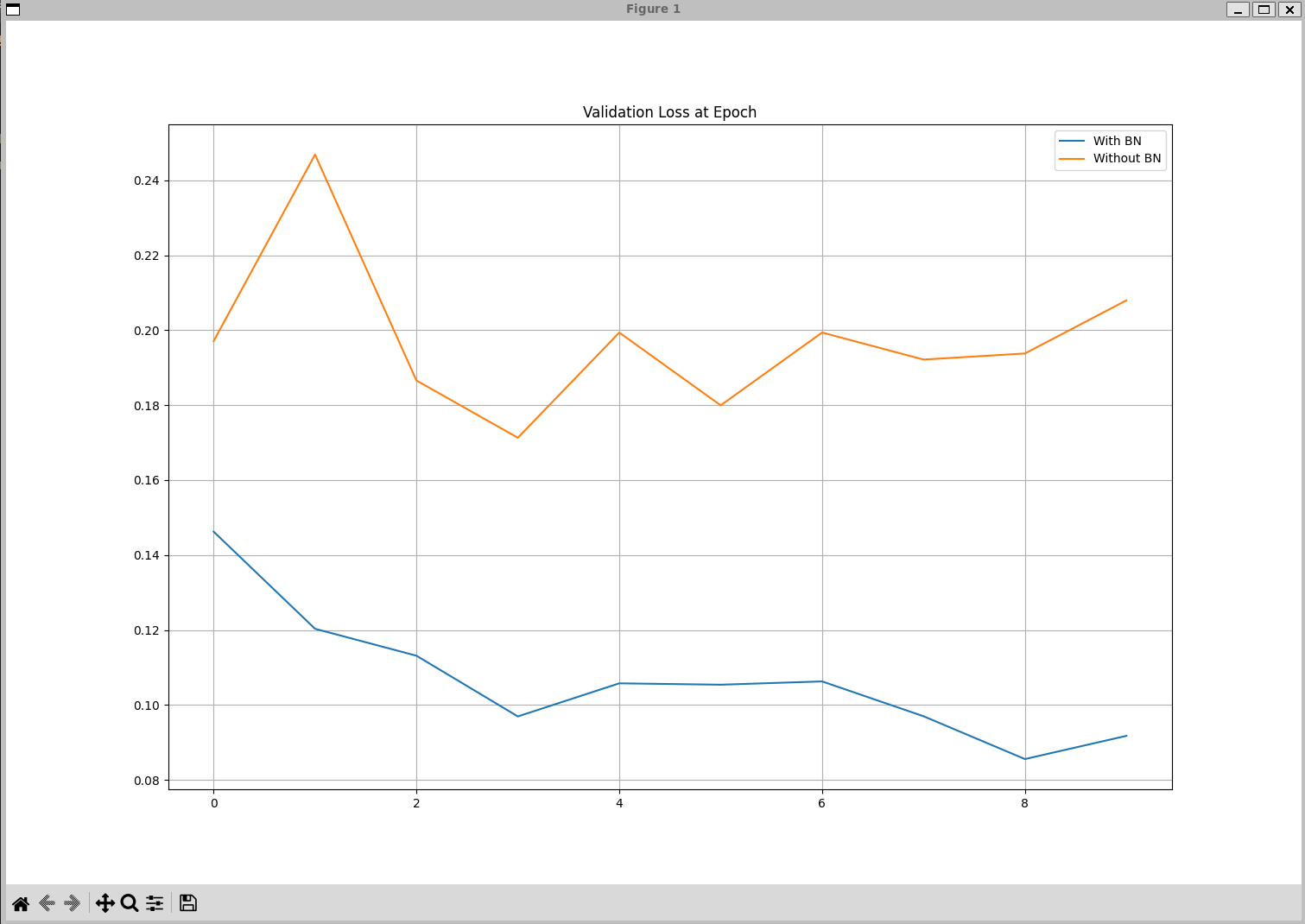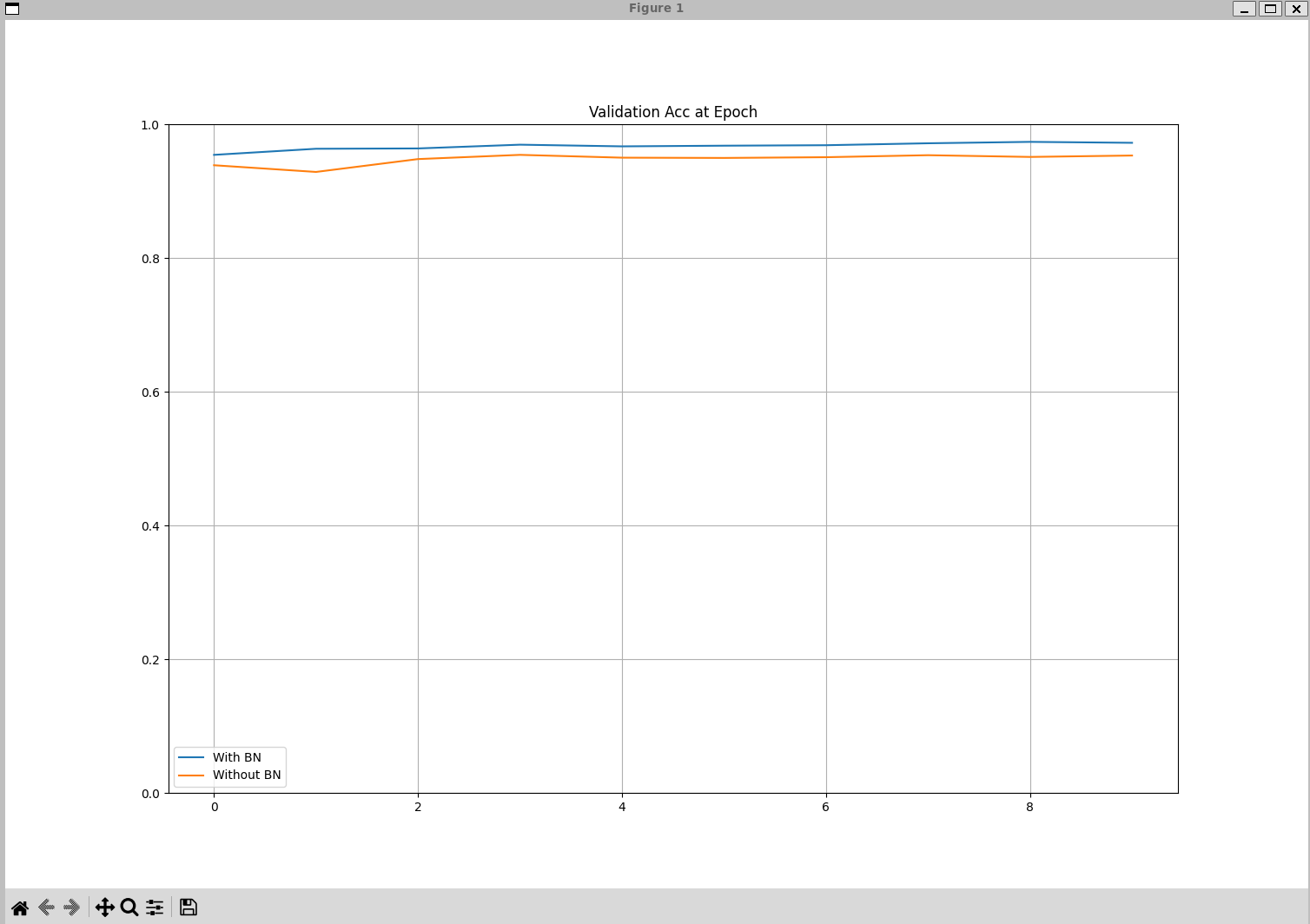[모두를 위한 딥러닝 시즌2] Lab-09-4 Batch Normalization
[모두를 위한 딥러닝 시즌2] Lab-09-4 Batch Normalization
Gradient Vanishing / Exploding
Gradient Vanishing
역전파 과정에서 입력층으로 갈수록 그라디언트가 너무 작아져 소멸하는 현상
Gradient Exploding
기울기가 입력층으로 갈수록 너무 큰 값이 되면서 발산되는 현상
해결책
- Activate Function 변경
- Weight initialization
- Small learning rate
- Batch Normalization (직접적인 방법)
Internal Covariate Shift
Covariate(공변량)이란 ?
- 데이터에서 결과 변수(종속 변수, Dependent Variable)에 영향을 미칠 가능성이 있는 독립 변수
- 어떤 시험 점수(결과 변수)에 영향을 미치는 공부 시간, 수면 시간, 집중도 등의 변수는 Covariates으로 간주될 수 있다
- 딥러닝에서는 입력 데이터의 각 특성(Feature)이 공변량 역할을 할 수 있다
Covariate Shift
- Train set과 Test set의 입력 특성(Feature) 분포가 다를 때 발생하는 문제
- 예시
- 훈련 데이터: 주간에 촬영된 도로 이미지 데이터를 사용해 자율주행 모델 훈련
- 테스트 데이터: 야간에 촬영된 도로 이미지 데이터
- 결과: 훈련 데이터에서 학습한 모델이 야간 테스트 데이터에서의 도로 및 차량 인식을 제대로 수행하지 못함
- 모델이 학습 데이터에는 잘 동작하지만 테스트 데이터에서는 성능이 저하될 가능성이 있음
- Gradient Vanishing / Exploding을 야기함
Internal Covariate Shift
- 뉴럴 네트워크에서는 각 레이어를 통과할 때마다 입력 데이터를 처리하면서 출력 데이터의 분포가 변한다. 이러한 출력 데이터의 분포 변화를 Internal Covariate Shift라고 함
- 레이어가 깊어질수록 강도가 증가한다
예시 : 고양이 학습 과정
- 고양이 이미지가 여러 레이어를 통과하면서 점진적으로 더 추상화된 Feature로 변환
- 각 레이어마다 출력 데이터의 분포가 변화
- 레이어가 깊어질수록 Internal Covariate Shift가 강하게 발생
Batch Normalization
- 각 Layer마다 Normalization을 하는 Layer를 추가하여 Internal Covariate Shift를 해결할 수 있다.
- mini-batch 마다 사용
작동 방식
Input
- $B = {x_1, x_2, \dots, x_m}$: Mini-batch 내의 x 값
- $\gamma\text{(Scale)}, \beta \text{(Shift Transform)}$: 학습 가능한 파라미터
Output
- 정규화 및 변환된 값: ${y_i = \text{BN}_{\gamma, \beta}(x_i)}$
Steps
Mini-batch mean(평균)
\[\mu_B \leftarrow \frac{1}{m} \sum_{i=1}^m x_i\]Mini-batch variance(분산)
\[\sigma_B^2 \leftarrow \frac{1}{m} \sum_{i=1}^m (x_i - \mu_B)^2\]Normalize
\[\hat{x}_i \leftarrow \frac{x_i - \mu_B}{\sqrt{\sigma_B^2 + \epsilon}}\]Scale and shift
\[y_i \leftarrow \gamma \hat{x}_i + \beta ≡ \text{BN}_{\gamma, \beta}(x_i)\]
Notes
- $\epsilon$: 아주 작은 값으로, 0으로 나뉘는 현상을 방지하기 위해 추가
$\gamma, \beta$: Normalize 이후 활성화 함수의 Non-linearity 같은 성질을 잃게 되는 문제를 완화시켜준다. 역전파로 업데이트된다.
- 계산했던 sample mean(mini-batch mean), sample variance(mini-batch variance)를 따로 저장해두었다가 Sample mean 값들과, Sample variance 값들의 평균을 구해 Learning mean, Learning variance로 사용
- 즉, 최종적으로 모델을 inference할 때는 Learning mean, Learning variance를 사용한다.
학습 과정
초기 조건
- Batch Normalization 파라미터 초기값:
- $\gamma = 1.0, \beta = 0.0$
- $\epsilon = 1 \times 10^{-5}$
Forward Pass (순전파)
Layer 1
입력 데이터
\[X_1 = \begin{bmatrix}\begin{bmatrix} 1 & 2 & 3 \\ 4 & 5 & 6 \end{bmatrix},\begin{bmatrix} 7 & 8 & 9 \\ 10 & 11 & 12 \end{bmatrix}\end{bmatrix}\]- Mini-batch 평균과 분산 계산
- 각 데이터 채널에 대해 평균($\mu_B$)과 분산($\sigma_B^2$) 계산
- 데이터 정규화
- 평균과 분산을 사용해 입력 데이터를 정규화
- 스케일과 이동 적용
- 학습 가능한 파라미터 $\gamma = 1.0, \beta = 0.0$을 적용:
- ReLU 활성화 함수 적용
- 활성화 함수(ReLU)
Layer 2
입력 데이터
\[X_2 = Z_1 =\begin{bmatrix}\begin{bmatrix} 0 & 0 & 0 \\ 0 & 0 & 0 \end{bmatrix},\begin{bmatrix} 0.85 & 0.51 & 0.17 \\ 1.89 & 1.55 & 1.21 \end{bmatrix}\end{bmatrix}\]Mini-batch 평균과 분산 계산
\[\mu_B = \begin{bmatrix} 0.44 & 0.28 & 0.19 \end{bmatrix}, \quad\sigma_B^2 = \begin{bmatrix} 0.45 & 0.35 & 0.25 \end{bmatrix}\]데이터 정규화
\[\hat{X}_2 = \frac{X_2 - \mu_B}{\sqrt{\sigma_B^2 + \epsilon}} =\begin{bmatrix}\begin{bmatrix} -0.66 & -0.47 & -0.38 \\ -0.66 & -0.47 & -0.38 \end{bmatrix},\begin{bmatrix} 0.62 & 0.39 & 0.22 \\ 1.07 & 0.92 & 0.80 \end{bmatrix}\end{bmatrix}\]- 스케일과 이동 적용
- 초기값: $\gamma = 1.0, \beta = 0.0$
ReLU 활성화 함수 적용
\[Z_2 = \text{ReLU}(Y_2) =\begin{bmatrix}\begin{bmatrix} 0 & 0 & 0 \\ 0 & 0 & 0 \end{bmatrix},\begin{bmatrix} 0.62 & 0.39 & 0.22 \\ 1.07 & 0.92 & 0.80 \end{bmatrix}\end{bmatrix}\]
Layer 3
입력 데이터
\[X_3 = Z_2 =\begin{bmatrix}\begin{bmatrix} 0 & 0 & 0 \\ 0 & 0 & 0 \end{bmatrix},\begin{bmatrix} 0.62 & 0.39 & 0.22 \\ 1.07 & 0.92 & 0.80 \end{bmatrix}\end{bmatrix}\]Mini-batch 평균과 분산 계산
\[\mu_B = \begin{bmatrix} 0.42 & 0.26 \end{bmatrix}, \quad \sigma_B^2 = \begin{bmatrix} 0.30 & 0.20 \end{bmatrix}\]데이터 정규화
\[\hat{X}_3 = \frac{X_3 - \mu_B}{\sqrt{\sigma_B^2 + \epsilon}} =\begin{bmatrix}\begin{bmatrix} -0.77 & -0.58 \\ -0.77 & -0.58 \end{bmatrix},\begin{bmatrix} 0.36 & 0.28 \\ 1.18 & 1.02 \end{bmatrix}\end{bmatrix}\]- 스케일과 이동 적용
- 초기값: $\gamma = 0.8, \beta = -0.2$
ReLU 활성화 함수 적용
\[Z_3 = \text{ReLU}(Y_3) =\begin{bmatrix}\begin{bmatrix} 0 & 0 \\ 0 & 0 \end{bmatrix},\begin{bmatrix} 0.088 & 0.024 \\ 0.944 & 0.816 \end{bmatrix}\end{bmatrix}\]
Backward Pass (역전파)
- 손실 함수 계산
- Mean Squared Error (MSE)
- Batch Normalization 파라미터 업데이트
- $\gamma$ 업데이트
- $\beta$ 업데이트
- 가중치 업데이트
- 각 레이어의 가중치와 편향을 역전파를 통해 업데이트
주의점
Batch Normalization에서 $\gamma, \beta$ 값이 변경되지 않도록 model.eval()을 사용해야 한다
미니배치 크기에 의존적이다
드랍아웃, 배치 노말라이제이션을 항상 쓰면 결과가 안좋을 수 있다
Code : mnist_batchnorm
1
2
3
4
5
6
7
8
9
10
11
12
13
14
15
16
17
18
19
20
21
22
23
24
25
26
27
28
29
30
31
32
33
34
35
36
37
38
39
40
41
42
43
44
45
46
47
48
49
50
51
52
53
54
55
56
57
58
59
60
61
62
63
64
65
66
67
68
69
70
71
72
73
74
75
76
77
78
79
80
81
82
83
84
85
86
87
88
89
90
91
92
93
94
95
96
97
98
99
100
101
102
103
104
105
106
107
108
109
110
111
112
113
114
115
116
117
118
119
120
121
122
123
124
125
126
127
128
129
130
131
132
133
134
135
136
137
138
139
140
141
142
143
144
145
146
147
148
149
150
151
152
153
154
155
156
157
158
159
160
161
162
163
164
165
166
167
168
169
170
171
172
173
174
175
176
177
178
179
180
181
182
183
184
185
186
187
188
189
190
191
192
193
194
195
196
197
198
199
200
201
202
203
import torch
import torchvision.datasets as dsets
import torchvision.transforms as transforms
import matplotlib.pylab as plt
import matplotlib
device = "cuda" if torch.cuda.is_available() else "cpu"
matplotlib.use("tkagg") # GUI 백엔드 설정
# for reproducibility
torch.manual_seed(1)
if device == "cuda":
torch.cuda.manual_seed_all(1)
# parameters
learning_rate = 0.01
training_epochs = 10
batch_size = 32
# MNIST dataset
mnist_train = dsets.MNIST(
root="MNIST_data/", train=True, transform=transforms.ToTensor(), download=True
)
mnist_test = dsets.MNIST(
root="MNIST_data/", train=False, transform=transforms.ToTensor(), download=True
)
# dataset loader
train_loader = torch.utils.data.DataLoader(
dataset=mnist_train, batch_size=batch_size, shuffle=True, drop_last=True
)
test_loader = torch.utils.data.DataLoader(
dataset=mnist_test, batch_size=batch_size, shuffle=False, drop_last=True
)
# nn layers
linear1 = torch.nn.Linear(784, 32, bias=True)
linear2 = torch.nn.Linear(32, 32, bias=True)
linear3 = torch.nn.Linear(32, 10, bias=True)
relu = torch.nn.ReLU()
bn1 = torch.nn.BatchNorm1d(32)
bn2 = torch.nn.BatchNorm1d(32)
nn_linear1 = torch.nn.Linear(784, 32, bias=True)
nn_linear2 = torch.nn.Linear(32, 32, bias=True)
nn_linear3 = torch.nn.Linear(32, 10, bias=True)
# model
bn_model = torch.nn.Sequential(linear1, bn1, relu, linear2, bn2, relu, linear3).to(
device
)
nn_model = torch.nn.Sequential(nn_linear1, relu, nn_linear2, relu, nn_linear3).to(
device
)
# define cost/loss & optimizer
criterion = torch.nn.CrossEntropyLoss().to(device) # Softmax is internally computed.
bn_optimizer = torch.optim.Adam(bn_model.parameters(), lr=learning_rate)
nn_optimizer = torch.optim.Adam(nn_model.parameters(), lr=learning_rate)
# Save Losses and Accuracies every epoch
# We are going to plot them later
train_losses = []
train_accs = []
valid_losses = []
valid_accs = []
train_total_batch = len(train_loader)
test_total_batch = len(test_loader)
for epoch in range(training_epochs):
bn_model.train() # set the model to train mode
for X, Y in train_loader:
# reshape input image into [batch_size by 784]
# label is not one-hot encoded
X = X.view(-1, 28 * 28).to(device)
Y = Y.to(device)
bn_optimizer.zero_grad()
bn_prediction = bn_model(X)
bn_loss = criterion(bn_prediction, Y)
bn_loss.backward()
bn_optimizer.step()
nn_optimizer.zero_grad()
nn_prediction = nn_model(X)
nn_loss = criterion(nn_prediction, Y)
nn_loss.backward()
nn_optimizer.step()
with torch.no_grad():
bn_model.eval() # set the model to evaluation mode
# Test the model using train sets
bn_loss, nn_loss, bn_acc, nn_acc = 0, 0, 0, 0
for i, (X, Y) in enumerate(train_loader):
X = X.view(-1, 28 * 28).to(device)
Y = Y.to(device)
bn_prediction = bn_model(X)
bn_correct_prediction = torch.argmax(bn_prediction, 1) == Y
bn_loss += criterion(bn_prediction, Y)
bn_acc += bn_correct_prediction.float().mean()
nn_prediction = nn_model(X)
nn_correct_prediction = torch.argmax(nn_prediction, 1) == Y
nn_loss += criterion(nn_prediction, Y)
nn_acc += nn_correct_prediction.float().mean()
bn_loss, nn_loss, bn_acc, nn_acc = (
bn_loss / train_total_batch,
nn_loss / train_total_batch,
bn_acc / train_total_batch,
nn_acc / train_total_batch,
)
# Save train losses/acc
train_losses.append([bn_loss, nn_loss])
train_accs.append([bn_acc, nn_acc])
print(
"[Epoch %d-TRAIN] Batchnorm Loss(Acc): bn_loss:%.5f(bn_acc:%.2f) vs No Batchnorm Loss(Acc): nn_loss:%.5f(nn_acc:%.2f)"
% (
(epoch + 1),
bn_loss.item(),
bn_acc.item(),
nn_loss.item(),
nn_acc.item(),
)
)
# Test the model using test sets
bn_loss, nn_loss, bn_acc, nn_acc = 0, 0, 0, 0
for i, (X, Y) in enumerate(test_loader):
X = X.view(-1, 28 * 28).to(device)
Y = Y.to(device)
bn_prediction = bn_model(X)
bn_correct_prediction = torch.argmax(bn_prediction, 1) == Y
bn_loss += criterion(bn_prediction, Y)
bn_acc += bn_correct_prediction.float().mean()
nn_prediction = nn_model(X)
nn_correct_prediction = torch.argmax(nn_prediction, 1) == Y
nn_loss += criterion(nn_prediction, Y)
nn_acc += nn_correct_prediction.float().mean()
bn_loss, nn_loss, bn_acc, nn_acc = (
bn_loss / test_total_batch,
nn_loss / test_total_batch,
bn_acc / test_total_batch,
nn_acc / test_total_batch,
)
# Save valid losses/acc
valid_losses.append([bn_loss, nn_loss])
valid_accs.append([bn_acc, nn_acc])
print(
"[Epoch %d-VALID] Batchnorm Loss(Acc): bn_loss:%.5f(bn_acc:%.2f) vs No Batchnorm Loss(Acc): nn_loss:%.5f(nn_acc:%.2f)"
% (
(epoch + 1),
bn_loss.item(),
bn_acc.item(),
nn_loss.item(),
nn_acc.item(),
)
)
print()
print("Learning finished")
# [Epoch 1-TRAIN] Batchnorm Loss(Acc): bn_loss:0.13419(bn_acc:0.96) vs No Batchnorm Loss(Acc): nn_loss:0.18107(nn_acc:0.94)
# [Epoch 1-VALID] Batchnorm Loss(Acc): bn_loss:0.14624(bn_acc:0.95) vs No Batchnorm Loss(Acc): nn_loss:0.19708(nn_acc:0.94)
# [Epoch 2-TRAIN] Batchnorm Loss(Acc): bn_loss:0.09798(bn_acc:0.97) vs No Batchnorm Loss(Acc): nn_loss:0.21851(nn_acc:0.94)
# [Epoch 2-VALID] Batchnorm Loss(Acc): bn_loss:0.12032(bn_acc:0.96) vs No Batchnorm Loss(Acc): nn_loss:0.24684(nn_acc:0.93)
# ...
# [Epoch 9-TRAIN] Batchnorm Loss(Acc): bn_loss:0.04610(bn_acc:0.99) vs No Batchnorm Loss(Acc): nn_loss:0.13256(nn_acc:0.96)
# [Epoch 9-VALID] Batchnorm Loss(Acc): bn_loss:0.08556(bn_acc:0.97) vs No Batchnorm Loss(Acc): nn_loss:0.19378(nn_acc:0.95)
# [Epoch 10-TRAIN] Batchnorm Loss(Acc): bn_loss:0.04632(bn_acc:0.98) vs No Batchnorm Loss(Acc): nn_loss:0.13249(nn_acc:0.96)
# [Epoch 10-VALID] Batchnorm Loss(Acc): bn_loss:0.09175(bn_acc:0.97) vs No Batchnorm Loss(Acc): nn_loss:0.20794(nn_acc:0.95)
def plot_compare(loss_list: list, ylim=None, title=None) -> None:
# bn = [i[0] for i in loss_list]
# nn = [i[1] for i in loss_list]
# Convert tensors to NumPy arrays
bn = [i[0].cpu().item() if torch.is_tensor(i[0]) else i[0] for i in loss_list]
nn = [i[1].cpu().item() if torch.is_tensor(i[1]) else i[1] for i in loss_list]
plt.figure(figsize=(15, 10))
plt.plot(bn, label="With BN")
plt.plot(nn, label="Without BN")
if ylim:
plt.ylim(ylim)
if title:
plt.title(title)
plt.legend()
plt.grid("on")
plt.show()
plot_compare(train_losses, title="Training Loss at Epoch")
plot_compare(train_accs, [0, 1.0], title="Training Acc at Epoch")
plot_compare(valid_losses, title="Validation Loss at Epoch")
plot_compare(valid_accs, [0, 1.0], title="Validation Acc at Epoch")
오류 상황 : figurecanvasagg is non-interactive, and thus cannot be shown plt.show()
해결 방법
- apt update
- apt install python3-tk
- 코드 추가
1
2
import matplotlib
matplotlib.use("tkagg")
This post is licensed under CC BY 4.0 by the author.






